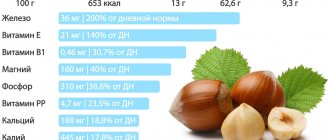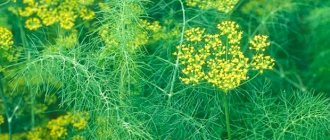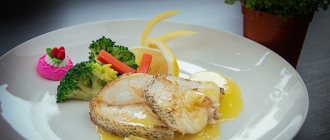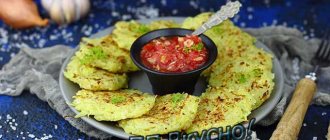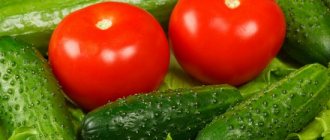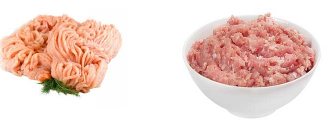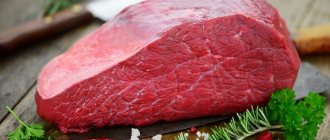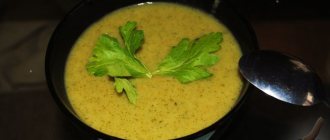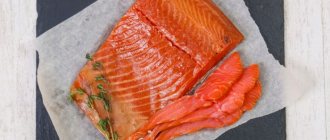Dill (literally from Greek - fragrant) is a spicy herb, known in almost all countries. In ancient cultures, winners were given wreaths and lovers were given bouquets made from dill.
Today it is a favorite spice, a herb that no housewife can do without. It contains twice as much calcium as milk. Moreover, dill holds the record for the presence of vitamin C: there is more of this compound in the plant than in citrus fruits. What else is useful for dill, what is its composition and energy value, methods of use and storage - we will tell you in the article.
Chemical composition, trace elements and vitamins of dill
Ratio of proteins, fats, carbohydrates: 26.9%, 5.4% and 67.7%. Below is the number of dill components per 100 g of product.
- proteins – 3.46 g;
- fats – 1.12 g;
- carbohydrates – 4.92 g;
- dietary fiber (fiber) – 2.1 g;
- ash – 2.45 g;
- water – 85.95 g.
Fatty acid:
- palmitic (0.05 g) – responsible for skin renewal and regeneration;
- stearic (0.01 g) – moisturizes the skin, protects from ultraviolet rays;
- oleic (0.8 g) – reduces the risk of heart disease, diabetes, lowers blood pressure;
- linoleic (0.08 g) – participates in lipid metabolism, good for the brain and liver cells;
- linolenic acid (0.01 g) – inhibits the growth of cancer cells, is necessary for strengthening hair and nails.
Fatty acids support heart function, help normalize blood circulation, mobilize the body's defenses, prevent the formation of tumors, and strengthen the immune system.
Macroelements are responsible for the condition of the skin, nails, hair, strengthen the walls of blood vessels, and prevent their fragility:
- potassium – 740 mg;
- calcium – 209 mg;
- magnesium – 55 mg;
- sodium – 61 mg;
- phosphorus – 69 mg.
Microelements promote cell construction, ensure the functioning of the endocrine system, and strengthen joints:
- iron – 6.6 mg;
- manganese – 1.26 mg;
- copper – 0.15 mg;
- zinc – 0.91 mg.
Vitamins:
- vitamin A (retinol equivalent) is a natural antioxidant, increases the body's defenses, promotes tissue restoration, and has a beneficial effect on the sex glands;
- vitamin C (ascorbic acid) – necessary for blood vessels, bones, connective tissue, removes toxins, protects against infections, lowers cholesterol;
- vitamin E (tocopherol) – antioxidant, rejuvenates, slows down cell aging, improves blood flow, prevents the formation of plaques and blood clots, and is beneficial for the genitourinary system;
- B1 – thiamine stimulates brain function, is necessary for the heart and endocrine system, and is beneficial for nerve cells;
- B2 – riboflavin is necessary for hormones and red blood cells, promotes tissue growth and renewal;
- B3 (PP) – niacin ensures protein metabolism, normalizes the functioning of the gastrointestinal tract and pancreas, reduces blood pressure, is a vasodilator, and affects blood composition;
- B5 – pantothenic acid is necessary for metabolism, regulates intestinal function, supports the nervous and immune systems, heals wounds;
- B9 – folic acid normalizes the process of hematopoiesis, optimizes the function of the digestive system, promotes cell growth and division, and participates in lipid metabolism;
- B6 – pyridoxine is necessary for the production of hemoglobin and hormones, relieves numbness, cramps, muscle spasms, and normalizes the functioning of the central nervous system.
Essential amino acids: arginine, valine, isoleucine, leucine, lysine, in small quantities histidine, methionine, threonine, tryptophan, etc.
Reference. Essential amino acids are structural components of protein that the body itself cannot synthesize. Necessary for the regulation of hormonal levels and the functioning of the nervous system.
Essential amino acids: aspartic, glutamic acid, alanine, glycine, proline, serine, tyrosine.
Reference. The body receives non-essential amino acids in finished form from food, they stabilize metabolic processes, promote the growth of muscle tissue, and play the role of neurotransmitters - conductors of nerve impulses.
Dishes
Dill has a strong, refreshing, spicy taste and aroma. Due to their low calorie content and supply of nutrients, you can add greens and seeds to your daily and dietary meals. Again, thanks to its fresh taste, dill goes well with almost all vegetables, meat and fish, and is a desirable ingredient in fermented milk drinks intended for cleansing and weight loss.
Omelette
Omelette with dill is a winning solution for a hearty breakfast. Those on a diet can also afford this dish, but to reduce calorie content (in the classic version there are 198 kcal per 100 grams) it is worth using only proteins.
The peculiarity of the omelet is the addition of cottage cheese. For 2 eggs you need about 40 grams. Beat the mass. Lightly add salt and ground black pepper. Three chopped branches of an aromatic plant are also sent there. Stir and pour into a frying pan greased with vegetable oil. The omelette should simmer, not fry.
Eating eggs along with greens ensures the consumption of body fat reserves. In this case, the muscle fibers remain intact. Also, a hearty but healthy breakfast will enrich the body with minerals and vitamins.
Cauliflower
Cauliflower with dill is a versatile dish that is equally great as an appetizer, light salad or side dish. Nutritionists agree that this representative of the cabbage family is superior to its counterparts in nutritional, taste and dietary qualities. The vegetable contains a large amount of vitamin C, vegetable protein and a whole range of microelements. Even folic acid, which is necessary for losing weight, is also present in sufficient quantities in cauliflower.
To prepare a hearty and low-calorie dish - 31 kcal per 100 grams - take 10 cabbage inflorescences. Rinse. Then cut one large potato into small cubes. Dip cabbage into salted boiling water, and after a few minutes, potatoes. Boil until the potatoes are ready (they should not turn into mashed potatoes!). A clove of garlic is fried in a small amount of olive oil. Cut one carrot into large strips, add to the garlic and fry for another 3 minutes. Place all the ingredients in a deep container. A chopped bunch of aromatic herbs, a little sesame and hot pepper are also sent there. Stir.
Blinov
Dill pancakes with curd and dill filling have a relatively low calorie content - 160 kcal per 100 g. At the same time, the dish turns out to be very satisfying and is suitable for both breakfast and dinner.
Beat 2 eggs into a bowl, add a pinch of salt and sugar. Beat. Pour in a few glasses of milk and add a teaspoon of baking powder. Beat again. Add 120 g of sifted flour and knead the dough. Leave for 10 minutes. At this time, chop a large bunch of dill. Add a glass of water and dill to the dough. Mix carefully. Fry pancakes over medium heat. Prepare the filling and sauce separately. In the first case, greens and cottage cheese are combined, in the second - sour cream and garlic.
If desired, the calorie content of the finished dish can be reduced by using non-wheat flour, and instead of fatty cottage cheese and sour cream, choosing low-calorie dietary products.
Sauce
Yogurt sauce with the addition of aromatic herbs is ideal for fish and vegetable salads. There are only 41 kcal per 100 g, so you can use it when losing weight. Thanks to this addition, fresh food will acquire not only a spicy taste, but also an aroma.
Making the sauce is easy. First, chop a bunch of dill using only the leaves. Then pass two cloves of garlic through a press. One fresh cucumber is grated on a fine grater and the water is squeezed out. 150 g of low-fat yogurt without additives and other ingredients are combined in a container. Add 2 teaspoons of freshly squeezed lemon juice and mix thoroughly.
Pickled cucumbers
Lightly salted cucumbers with a lot of dill are a savory appetizer, the calorie content of which is low - only 19 kcal per 100 g. Preparation time is also required - no more than 10 minutes. After just 3-4 hours, crispy, aromatic cucumbers can be consumed for lunch and dinner.
Seven small cucumbers are washed. Remove the ends and cut lengthwise into 2 parts. Wash and chop 3 leaves of horseradish, as well as a large bunch of dill. Coarsely chop a head of young garlic. Cucumbers are placed in a pan. Herbs, garlic and 0.5 teaspoon of salt are also sent there. Cover the pan with a lid and shake to mix the cucumbers and other ingredients. Place the container in the refrigerator for 3-4 hours. In order for the cucumbers to be better salted and imbued with flavor, you need to shake the pan periodically.
Potatoes
Potatoes go well with dill; they can be boiled, fried and baked. The latter option is better than others for a limited diet, since it is not bland, like boiled, and not as high in calories as fried. The calorie content of the dish for every 100 g is 131 kcal, which is quite acceptable even with a moderately strict diet, especially if you eat the dish at lunchtime.
Six small potatoes, preferably young ones, are washed, peeled and placed in a baking dish. Grease with vegetable oil and bake for 20 minutes at a temperature of 200 degrees, after covering with foil. Grate 150 g of Adyghe cheese and 70 g of hard cheese. Adyghe cheese, chopped bunch of herbs and spices to taste are combined in a container. Let stand for about 10 minutes. Slightly cooled potatoes are cut lengthwise into 2 parts. Using a teaspoon, remove the middle. Fill the halves with cheese mixture and sprinkle hard cheese on top. Bake for about 5 minutes.
Salmon
Oven-baked salmon fillet can be used as an everyday dish or served at a holiday table. The use of dill in a recipe increases the benefits of the dish and gives it a unique spicy aroma and fresh taste. 100 grams contain 174 kcal, so fillet can be consumed occasionally if you are on a limited diet.
Salmon fillet is cut into small pieces. Rub with salt and black allspice. Beat the egg in a bowl. Add half a bunch of greens. Dip pieces of fish in the prepared batter. Place in a frying pan with vegetable oil and fry on both sides until golden brown. Transfer the fillets to a baking dish previously covered with parchment. Place in the oven for 5 minutes. Serve sprinkled with fresh dill.
soup
Lenten bean soup is prepared with the addition of not fresh, but dried product. The calorie content of the soup - 33 kcal per 100 g - allows you to consume it while following a diet for weight loss. In addition to white beans, the first course includes potatoes, carrots, and onions. This determines not only the satiety, but also the benefits of the soup.
A glass of white beans is soaked in water for 1 hour. Afterwards the water is drained, filled with fresh water, a pinch of salt is added and put on fire. After boiling, cook for about 40 minutes over low heat. Peel and cut 500 g of potatoes into small cubes. One carrot is peeled and grated. The onion is cut as finely as possible. Pour 3 liters of water into the pan and put it on the fire. Carrots and onions are fried in olive oil until tender, and potatoes are placed in boiling water. Cook from the moment of boiling for 20 minutes. The beans are drained in a colander and then added to the potatoes. Add carrots and onions. Add some salt. Add a teaspoon of dried dill. Boil for about 5 minutes and remove from heat.
Calorie content of dill per 100 g
In dietetics, dill is classified as a product with negative energy value. For those who limit themselves to high-calorie foods, dill is simply irreplaceable. In addition, this greenery, accessible to everyone, replenishes “vitamin” hunger and supports the body throughout the year.
Fresh
The energy value per 100 g is only 38-40 kcal, depending on the climate, conditions and place of cultivation. One branch contains 10 g, and a bunch contains 15-20 g. Even if you are on a strict diet, you can season any dishes with dill; this will not affect your daily calorie intake.
Important. Immunologists and nutritionists recommend consuming mainly fresh dill, as it retains more nutrients.
Dried
About 15-20 years ago, housewives stocked up on dill for the winter in the only way - by drying finely chopped greens. If you don’t have a good freezer at home, this method is still the most affordable and simplest.
Important. Properly dried dill, without exposure to direct sunlight, retains 95-98% of its spicy smell and beneficial properties.
The nutritional value of dried dill changes due to loss of moisture (per 100 g) - 78-80 kcal.
It is recommended to dry the seeds, they give a stronger smell, they contain three times more fat, the nutritional and energy value of dill seeds reaches 300 kcal per 100 g.
Frozen
Today, freezing is the most optimal way to preserve greens for a long period.
Important. When deep frozen, without periodic defrosting, dill retains vitamins and nutrients 100%.
The calorie content and ratio of proteins, fats and carbohydrates in frozen dill is also preserved - 38-40 kcal.
Freeze clean, dry, finely chopped greens, store in special containers or in a plastic bag.
Canned
Dill is added to canning exclusively as a spice; the calorie content of the herbs does not change (up to 40 kcal per 100 g), but it almost completely loses its beneficial properties.
Pickled
Any marinade and brine is subjected to heat treatment, dill loses its beneficial properties, vitamins and minerals, the calorie content remains unchanged - 38-40 kcal per 100 g.
Dill oil
Dill oil is an oil extract prepared from dill or fennel seeds.
Reference. Fennel (dill or dill) is an essential oil plant of the Apiaceae family.
At home, the seeds are pounded in a wooden mortar by hand or crushed with a coffee grinder, olive oil is added in equal proportions, and stored in a cool, dark place.
In industry, dill oil is obtained by steam distillation. The raw material is pre-dried seeds. The finished product is a colorless or greenish volatile liquid with a spicy, sweetish aroma.
The energy value of dill oil is 890 kcal per 100 g. In 1 tsp. – 5 g., in 1 tbsp. l. – 16 years
Dried
Dried dill is no less a common seasoning than fresh dill. Thanks to the slight addition of spice, dishes acquire an anise flavor and a subtle spicy aroma. It is noteworthy that the aroma and taste of the dried plant is more concentrated than that of the fresh one, so use should be dosed. This is also indicated by the calorie content - 253 kcal per 100 grams. However, with a relatively high calorie content, even nutritionists recommend adding dried dill to dishes, citing the ability of this green to quickly saturate and dull the appetite.
In addition to its taste and ability to reduce appetite, dried dill has a number of beneficial properties for the body. In particular, due to the high content of essential oils, it normalizes metabolism. It is also recommended to use dried herbs to normalize the functioning of the digestive system. After drying, the grass retains a large supply of vitamins, especially group B. Another advantage of the dried product is the large amount of minerals it contains. This is a real storehouse of manganese, iron and calcium. Regular consumption of dried plants allows you to replenish their deficiency in the body.
For drying, dill greens should be collected before the flowering period, since after this the leaves acquire a certain roughness. Drying the plant is not difficult: chop the greens, place them on a tray and leave them at room temperature for several days. When prepared, the product should be stored in a glass container with a well-closing lid. This way you can preserve the spicy aroma and benefits for a long time.
Along with greens, seeds are also dried. The optimal time for collection for the purpose of further harvesting is the period of brown coloring. Dry them by placing them on a tray and leaving them in a warm, dry place for several days. The finished product is used for preservation and as a seasoning for first courses, vegetables and meat. The calorie content of 100 grams of dried seeds is 305 kcal.
The benefits and harms of dill
From a medical point of view, dill is an invaluable product:
- rich in retinol, it ensures growth and metabolism function, prevents eye diseases;
- thanks to the vitamin composition and essential oils, it improves well-being, activates mental activity, relieves nervousness and tension;
- has a beneficial effect on cellular metabolism and cell structure;
- prevents hair loss, brittle nails, maintains the condition of the skin and mucous membranes;
- normalizes the activity of the nervous system, mobilizes the body's defenses;
- prevents blockage of blood vessels, strengthens capillaries, increases hemoglobin, cleanses the blood and blood vessels;
- micro- and macroelements participate in hematopoiesis processes, improve blood composition, reduce sugar and cholesterol levels, support heart function;
- dietary fiber normalizes intestinal function, gently removes toxins and heavy metal salts from the body;
- dill water relieves babies from colic;
- folic acid reduces fat deposition on internal organs, folates normalize lipid metabolism, indispensable for bone marrow;
- Dill greens are a natural immunomodulator, reduce the risk of malignant tumors, block inflammatory processes;
- useful for women - prevents uterine bleeding, normalizes the menstrual cycle;
- tincture of seeds treats bronchitis and is used as an expectorant.
This product has no direct contraindications or restrictions.
Considering the properties of the plant, composition and action, it is recommended to use it with caution in the following cases:
- with low blood pressure, the main danger is excessive consumption;
- in cases of food allergies, when symptoms appear - itching, sneezing, watery eyes, rash on the body - dill is excluded from the diet.
Pickled
Pickling is another simple way to prepare dill for the winter. The calorie content of 100 grams of the finished product is 255 kcal. Pickled herbs are not only tasty and convenient, but also very healthy: due to the preservation of most beneficial substances, the use of pickled dill contributes to overall health. Increasing immunity, reducing nervousness, normalizing digestion and functioning of the cardiovascular system - this is not a complete list of everything that can be obtained by regularly adding pickled dill to food.
In culinary terms, the preparation is no less valuable. It can be added to first courses, vegetable smoothies and salads, and snacks. The combination of pickled herbs with meat and especially fish seems excellent. For a dietary diet, this is a good opportunity to add aroma and spicy taste to bland dishes.
To prepare a pickled product, you need the greens of the plant. It is washed, cut and placed in a jar. Next, you need to prepare the brine: for 1 liter of water take 20 ml of vinegar essence, 20 grams of table salt and 100 grams of sugar. Black peppercorns and bay leaves are used as spices. Store the preparations in a cool place.
Features of application
In addition to cooking, dill, essential oil, and seeds are used in folk medicine:
- tincture of seeds treats seasickness;
- essential oil is added to homeopathic remedies;
- used as massage oil in the fight against cellulite;
- for acne, wipe problem areas of the skin with tincture of dill seeds;
- gruel from pureed fresh herbs heals wounds and burns, relieves inflammation of the skin;
- compresses from a decoction of seeds relieve eye fatigue due to overstrain;
- For bloating, it is recommended to chew dill seeds.
Fennel essential oil is used in the soap industry, in the production of perfumes and cosmetics, for example, creams, colognes, toothpaste, and aftershave products.
In the food industry, dill oil is used to make alcoholic beverages: brandy, vermouth, liqueurs, etc. - for richness of taste.
Dill - benefits of fresh, green, dried dill, dill decoction for the human body?
What are the benefits of dill for the body? Dill, which has many benefits, may be even better than you think. We all constantly encounter it, but we don’t even think about the benefits, and they are very great. For example, essential oils can activate digestion and improve the absorption of food . Therefore, when we eat kebab with dill, the meat is easier to digest and does not bloat the stomach.
- Dill contains phytoncides, which, together with vitamin C and other beneficial substances, allow you to cleanse the gastrointestinal tract of pathogenic flora, as well as improve its immunity. Plus, dill helps strengthen your overall immunity during the cold season.
- A decoction of dill is very often used for dyspepsia and it can slow down the proliferation of cancer cells. In any case, this is the opinion of some experts.
The benefits of dill
- For diseases of the respiratory organs, for example, colds, dill helps relieve spasms from coughing and sneezing. Moreover, essential oils have antihistamine effects and can relieve allergies.
- For women, the plant is useful during painful menstruation , as it can act as an antispasmodic. The decoction has this effect.
- Not many people know, but dill contains a lot of calcium, which is a building material for bones. So older people should eat these greens more often to prevent osteoporosis. The plant also promotes the rapid healing of fractures and cracks.
- Greens contain many flavonoids, as well as vitamins to normalize mental activity. If you eat a sprig of dill, the feeling of anxiety will disappear, and fatigue will also become less.
- If you drink the decoction, it will have a beneficial effect on the reproductive system . It is useful for both men and women whose hormonal levels decrease with age.
- Thanks to this plant, you can even normalize your blood pressure. Dill calms the nerves, but can also invigorate if required.
Who is it useful for?
Dill (you see a photo of it in our article) is a real storehouse of health. It not only helps replenish the lack of vitamins and minerals, but also helps improve the health of the body. Dill simulates the production of enzymes, which has a positive effect on the digestive system as a whole. It is useful for people suffering from diseases of the liver, pancreas, kidneys and urinary system, and is indicated for flatulence and hemorrhoids. With the help of dill, traditional medicine successfully treats cystitis and hiccups; it is considered a powerful cough remedy. It is recommended for breastfeeding women to increase breast milk and is used in the treatment of mastitis.
It has a beneficial effect on the cardiovascular system: strengthens and cleanses the walls of blood vessels and the muscles of the heart. It can lower blood pressure, so people with low blood pressure should consume dill in moderation. Fresh greens have a calming effect, can relieve headaches, and lower blood sugar levels. In addition, dill sprigs are an excellent anesthetic, which means they will help cleanse the intestines of putrefactive bacteria and stabilize its functioning.
It turns out that the products we know well are not as simple as we often think about them. A few sprigs of fresh dill are quite capable of giving us vitality and maintaining health. Remember that fresh vegetables and fruits are vital for us, try to diversify your diet with new tasty and healthy culinary finds.
Composition of nutrients, BJU
| For quantity: 100 grams | |
| Calories – 43 | Calories from fat – 10 |
| BJU | |
| Total fat content | 1.12g |
| Saturated | 0.06g |
| Polyunsaturated | 0.1g |
| Monounsaturated | 0.8g |
| Cholesterol | 0mg |
| Total carbohydrate content | 7.02 |
| Dietary fiber | 2.1g |
| Sugar | 0g |
| Squirrels | 3.46g |
| Vitamins and microelements | |
| A – 386 µg | C – 85 mg |
| B-6 – 0.18 mg | B-12 – 0µg |
| D – 0µg | E – 0 mg |
| Calcium 208mkg | Iron 6.59 mg |
| Magnesium 55mg | Zinc 0.91 mg |
| Potassium 738 mg | Sodium 61mg |
Distribution of calories for BJU: |
Types, varieties and their differences
The only representative of the genus is Dill, or garden dill. This type of plant is grown on all continents.
With the help of selection, several varieties of dill have been developed depending on the ripening period:
- Early ripening;
- Mid-season;
- Late ripening.
Early varieties quickly produce fresh greens, but very soon they enter the flowering stage (an umbrella appears). To enjoy the aromatic seasoning for a long time, you should choose mid- or late-ripening varieties.
Pay attention to the following varieties of early dill:
- Grenadier – suitable for fresh use, has a delicate taste and rich aroma.
- Gribovsky is an excellent option for freezing or canning.
- Dalny is an unpretentious variety, resistant to pests.
Mid-season varieties include:
- Alligator – has a bright taste and aroma.
- Amazon - for long-term storage.
- Kibray is characterized by high productivity.
- Richelieu - has a delicate taste and is resistant to pests.
The best varieties of late ripening dill:
- Frost – does not lose freshness when frozen.
- Kutuzovsky - has a rich smell and taste.
- Mischievous - characterized by high productivity.
A competent choice of dill variety for cultivation will allow you to enjoy the herbs not only in summer, but also in winter, when vitamins and other useful substances are especially lacking.
Radish calorie content
Radish is perhaps the very first vegetable that comes to the aid of the human body after winter hibernation. It is these beautiful red root vegetables that we owe in the fight against vitamin deficiency, low immunity and hemoglobin. Radishes are often eaten to strengthen blood vessels.
| Calories | 20 kcal |
| Squirrels | 1.2 g |
| Fats | 0.1 g |
| Carbohydrates | 3.4 g |
| Cellulose | 1.6 g |
| Water | 93 g |
| Salad with radish and egg | 51 kcal |
| Radish and celery salad | 31 kcal |
Today there is evidence that radishes are able to fight cancer. It is especially useful to eat this root vegetable if you are at risk of breast, colon and prostate cancer. Radishes should also be included in your diet to relieve swelling and frequent constipation.
The use of dill in cooking
Dill is the most indispensable spice in cooking. Dill is considered a universal seasoning for many dishes. It is used as an aromatic herb for various dishes to give them a refreshing, appetizing taste. Dill can be used not only fresh, but also dried, and even salted.
Where is dill used?
The dill plant can be combined with many vegetables, mushrooms, fish and meat products; greens are good in various sauces, salads and side dishes. Perfectly complements and adds appetite with young boiled potatoes.
After reading about potatoes, what did you immediately feel? Exactly! You're probably drooling! It really is an amazing aroma and taste! It complements diet dishes well, such as cottage cheese, kefir or yogurt. Dill can be used:
- Add to first courses for decoration and flavor.
- Add to various salads for a spicy taste.
- Used in various sauces.
- Dill gives a special taste to pickles and marinades. When pickling vegetables, the phytoncides contained in the plant give them a unique, specific taste, and also protect the products from mold and spoilage.
- They add seafood, crayfish, and shrimp when cooking; perhaps no one will refuse such an aroma and taste.
- Dill oil finds its use in the food and alcoholic beverage industries to impart a special aroma.
- Used in the confectionery industry to add a special taste to confectionery products.
Recipes
Cottage cheese with dill.
Cottage cheese with dill recipe
Ingredients:
- cottage cheese 200 g
- dill 50 g
- 4 tbsp. lie sour cream
- garlic 2 cloves
Preparation:
Chop the greens and garlic and blend in a blender. Add cottage cheese and sour cream, and mix everything again until smooth. Now you can spread it on bread and serve. Bon appetit!
Green smoothie
Yogurt with dill recipe
Ingredients:
- dill 5 sprigs
- basil 2 sprigs
- mint 1 sprig
- medium cucumber 1 pc.
- yogurt 200 ml
Preparation:
Peel the cucumber, cut into pieces, place in a blender. Add chopped dill and basil, chop everything. Combine with yogurt and beat everything again until smooth. Pour into glasses and garnish with a mint sprig. Serve before lunch. Bon appetit!
With dill, many dishes become healthy, tastier, more aromatic and more attractive.
Useful properties of dill seeds for weight loss, recipes
Weight loss occurs due to the ability of dill and its seeds to remove unnecessary substances and toxins from the body, destroy small parasites (helminths), harmful microflora and normalize the digestion process, when appetite decreases and more nutrients enter the body from smaller amounts of food eaten.
Recipe for tea with dill seeds for weight loss:
- Immerse 1 tbsp in a glass of boiling water. spoon of dill seeds and let it brew in a warm place for 1.5-2 hours. This is the daily amount of drink that you need to drink between meals, about half an hour before meals.
Smoothie with dill for weight loss:
- Grind 3 tbsp. spoons of green dill leaves. Grate 3 tbsp on the finest grater. spoons of carrots. Grind the zest of 1/4 of a small lemon. Add 1 tbsp. a spoonful of honey. Mix in a blender with 350 ml of water (mug). Drink in the morning 30 minutes before meals, or instead of an afternoon snack, 1 serving per day.
Smoothie recipe with dill leaves for weight loss:
- Finely chop fresh dill. Approximately 3 tbsp. spoons, pour 1 glass of drinking water. You can add 1 kiwi, tbsp. a spoonful of lemon juice, a sprig of chopped celery. Drink 1 serving in the morning on an empty stomach 20-30 minutes before meals instead of a morning cocktail.
Smoothie recipe with dill and kefir:
- 1 tbsp. Mix low-fat kefir with 3 tablespoons of chopped green dill. Add half a small cucumber and 1 c. a spoonful of chopped fresh parsley. Drink 1 serving of the resulting smoothie per day. Can be divided into 2-3 doses.
Recipe with dill seeds for weight loss:
- One tbsp. Grind a spoonful of dill seed to a state of 50% powder and 50% whole seeds. In the morning on an empty stomach, 40 minutes before meals, take this powder with 1.5-2 glasses of water or a mug. Drink for 3 days. After this, you can switch to tea or smoothie with dill.
You should start your weight loss course with dill with the last recipe. Take dry ground seed for 2-3 days. Then drink a smoothie with dill for 2 weeks. Next, take a 1 week break and drink tea with dill seeds for 2 weeks (top recipe). Another week off and again drinking smoothies, a break, tea. We clean it with dry grated dill (last recipe) once every 2 months.
These recipes will work if you limit your calorie intake or include them as part of a weight loss diet.
The use of dill in folk medicine
What are the benefits of dill seeds?
Dill is widely used in medicine. An infusion is made from the leaves and stems and used for high blood pressure. It is effective in chronic coronary insufficiency and prevents angina attacks. They drink the infusion during nervous breakdowns as a sedative.
The infusion is also useful as a wound healing agent for itchy skin. The drug “Anetin”, obtained from seeds, has an antispasmodic effect. Medicinal seeds and dill oil are used as a carminative, sedative and sedative. For medicinal purposes, seeds are often used in infusions, decoctions and tinctures.
Infusion of dill seeds
To prepare an infusion of dill seeds, you need
- take 1 tablespoon of seeds
- pour 200 ml boiling water
- leave for 25-30 minutes
- drink the resulting infusion 3 times a day, 100 ml before meals
Dill seed tincture
The tincture is prepared with vodka, it can be stored for a long time, for this you need
- take 50 g of seeds
- pour 500 ml of vodka
- leave for 2 weeks in a dark place, shaking occasionally
- take 20 drops per 50 ml of water 3 times a day.
Decoction of dill seeds
A decoction can be made from the plant itself (stems, umbrella inflorescences), but a decoction from the seeds will still be more effective.
- take 1 teaspoon of seeds
- pour 250 ml of water and place in a water bath
- boil for 15-20 minutes
- take 50 ml before meals
All these drugs are good for the treatment of the gastrointestinal tract, kidneys, liver, bronchitis and cough, useful for constipation, insomnia, and high blood pressure. Dill, which almost everyone has in their kitchen, we use without thinking, but it brings us so many beneficial substances for our body.
